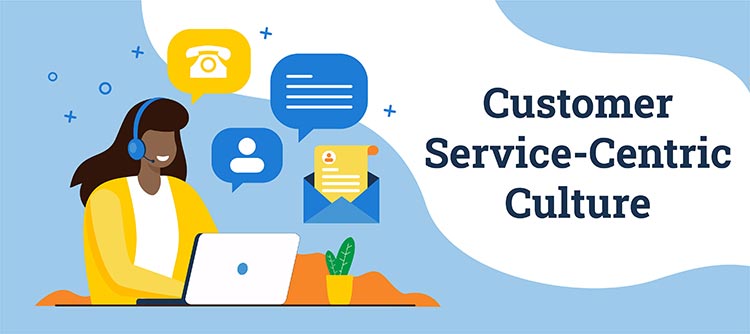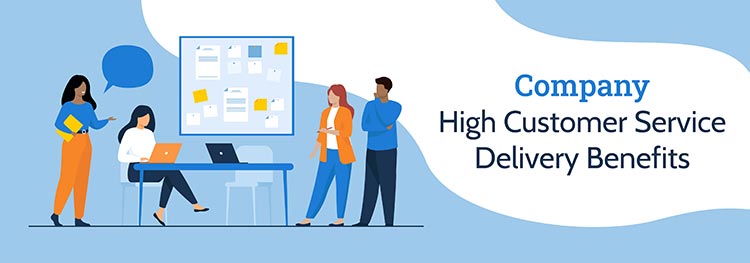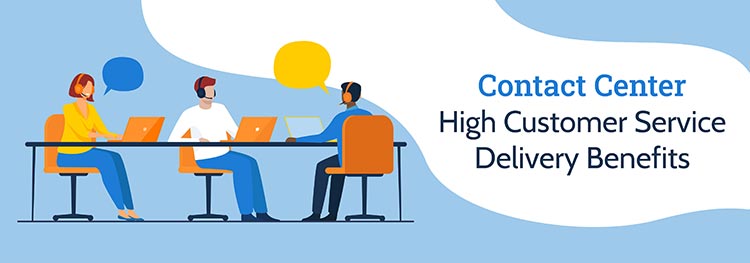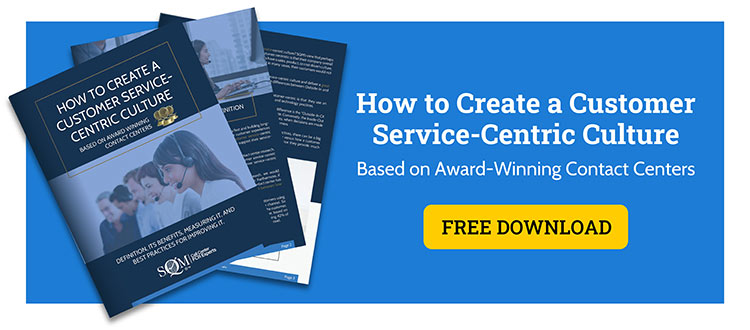Customer Service-Centricity Definition
Customer centricity is a service operating practice based on putting your customers first and building long-term customer relationships. Being customer-centric is done by delivering positive customer experiences before, during, and after purchasing a product or service. Moreover, creating a customer service-centric culture requires leaders to align their people, processes, and technology practices to support their service-centric culture efforts.
Most contact centers feel they have a customer service-centric culture. In our recent contact center research, we asked industry practitioners the question, "Does your contact center have a customer service-centric culture?" 59% responded that they 'completely agree' their contact center is a customer service-centric culture.
However, based on SQM Group's contact center customer service benchmarking research, we would characterize less than 25% of contact centers as having a customer service-centric culture. Furthermore, if you use world-class or high customer satisfaction (Csat) as the criteria for determining if a contact center has a customer service-centric culture, it would be less than 10%. Clearly, there is a disconnect between how customers and contact center managers view customer service-centricity.
SQM research shows that 93% of customers using the contact center channel and 72% of customers using the website channel expect to resolve their inquiry or problem in one contact using only one channel. So when the mission is to deliver a great customer experience (CX) on any contact channel used by the customer, One Contact Resolution (OCR) is what today's connected customers really want for CX. However, based on the 500 leading North American contact centers SQM benchmarks on an annual basis, an alarming 42% of customers cannot resolve their inquiry or problem on the first contact using only one contact channel.

Why do so many contact centers struggle to have a customer service-centric culture? It is SQM's view that perhaps the biggest obstacle that hinders contact centers from being customer centristic is that their company overall does not have a customer service-centric culture. Most companies have a sales, product, or cost-driven culture. They might describe their culture as customer service-centric, but in many cases, their customers would not characterize their companies in the same manner.
Given contact center management's struggle to create a customer service-centric culture and deliver a great customer experience, we thought sharing SQM's experience about the differences between Outside-In and Inside-Out CX operating practices would be helpful.
SQM's view that one of the main reasons companies struggle to be customer-centric is that they use an Inside-Out approach to guide decision-making for their people, processes, and technology practices.
CX operating practices can be an Outside-In or an Inside-Out approach. The difference is the "Outside-In CX operating practices are based on putting the customer first for how they operate. Conversely, the Inside-Out CX operating practices are based on putting the organization first." In many cases, when decisions are made with an Inside-Out approach, they meet the companies needs but not the customer’s.
Furthermore, when a company uses an Inside-Out approach for CX operating practices, there can be a big disconnect between how the company views how they are delivering their service versus how a customer views the service they experience. In most cases, the companies consider the service they provide much higher than how customers rate it.
The Benefits of a Customer Service-Centric Culture
A customer service-centricity culture has become a critical success factor for company growth and profitability because focusing on improving customer service supports achieving company objectives.

It's challenging to differentiate a company based on your products and services. However, customer service might be the only way to differentiate a company from your competition in a sea of sameness. The below 5 statistics show the value and benefits of great customer service and why all companies need to get on board the customer service train:
- Companies that excel at customer experience grow revenue 4% to 8% above their market.
- Two-thirds of marketers responsible for CX say their companies compete mainly based on customer experience.
- If a company provides a great customer experience, consumers will pay a premium price of up to 16%.
- It costs five times more to attract a new customer than it does to retain one.
- A 2% increase in customer retention has the same impact on profits as cutting costs by 10%.

Customer service is the most critical component of a contact center. Your organization might have excellent products and low cost, but if your contact center's customer service is poor, it will negatively affect your overall customer relationships and brand image.
In addition, customer service is important because if it is great, a contact center can help improve customer satisfaction, lower operating costs, reduce customers at risk of defection, increase opportunities to sell, and the transactional Net Promoter Score®. The below 5 statistics illustrates the importance and benefits of delivering contact center great customer service:
- For every 1% improvement in FCR, there is a 1% improvement in customer service Csat.
- For every 1% improvement in FCR, you reduce your operating costs by 1%.
- 95% of customers will continue to do business with the organization when they experience FCR.
- When a customer's call is resolved, the customer cross-selling acceptance rate increases by up to 20%.
- The transactional NPS average is 64 when customers experience First Call Resolution for their inquiry or problem.
Measuring the Success of Customer Service-Centricity
Not every company will use the same metrics at the contact center or at the enterprise-wide level to measure the success of their customer service-centricity for delivering a great customer experience. SQM's view is that measuring the success of being customer service-centric should be based on letting the customers judge their experience, and the company determines internal metrics performance.

SQM's top 10 CX metrics for measuring customer service-centricity success provide valuable insights on customers' experiences when using a contact channel or multiple contact channels to resolve an inquiry or problem and on transactional overall customer relationship performance. The top 10 contact center CX metrics are measured by the voice of the customer (VoC) post-contact transactional survey method. The measurement and reporting of the CX metrics should take place daily. So here are the top 10 customer service metrics used by contact centers genuinely committed to being customer service-centric:
- Contact resolution
- First contact resolution
- One contact resolution
- Contact channel Csat
- Customer emotion experience
- Seamless experience
- Omni-channel experience
- Transactional CX greatness
- Transactional net promoter score
- Transactional net retention index

Curious about what customer service-centric metrics are used at the enterprise level for leading North American companies that you should be measuring? The top 10 enterprise-wide metrics are measured by a VoC relationship survey method and by internal company metrics. The measurement and reporting of the CX metrics should take place monthly. So here are the top 10 enterprise-wide customer service metrics used by companies genuinely committed to being customer service-centric:
- Monthly and annual recurring revenue
- Average revenue per customer
- Buying frequency
- Share of customer's wallet
- Contact channel frequency
- Churn rate
- Customer lifetime value
- Enterprise net promoter score*
- Enterprise net retention index*
- Enterprise customer satisfaction*
Note: * VoC relationship survey method is used to measure metric
Being customer service-centric requires a huge company commitment because to be successful, you need to realize it is a journey and not a one-time project. When frontline and management need to use a different mindset and acquire new skills for delivering a great CX, it necessitates effective reinforcement, measurement, and tracking the success of a customer service-centric culture.
In addition, to measuring CX, you'll need to measure, benchmark, and track employee satisfaction to ensure you capture their feedback and learn about having a customer service-centric culture. SQM's viewpoint is that employees can provide tremendous insights for improving people, processes, and technology to enhance CX. Some of the ways to measure and track employee feedback include:
- Conduct online employee surveys to understand employees' mindsets and views on the companies ability to be customer service-centric.
- Using a short online survey method every quarter, measure, benchmark, and track employee engagement.
- Conduct employee focus groups to discuss how your people, processes, and technology practices impact CX and opportunities to improve.
Quick Related Links
First Call Resolution Definition First Call Resolution PPT First Call Resolution Benefits
First Call Resolution Strategies First Call Resolution Operating Philosophy Call Handling Best vs Worst Agents Agent Recognition Celebrating Agent Success QA Form Customer Quality Assurance Survey Data Coaching Tips What is a Good FCR Rate? VoC Closed-Loop Top 10 CX Metrics Agent Recognition Case Study Agent Training VoC Performance Management VoC Performance Case Study

